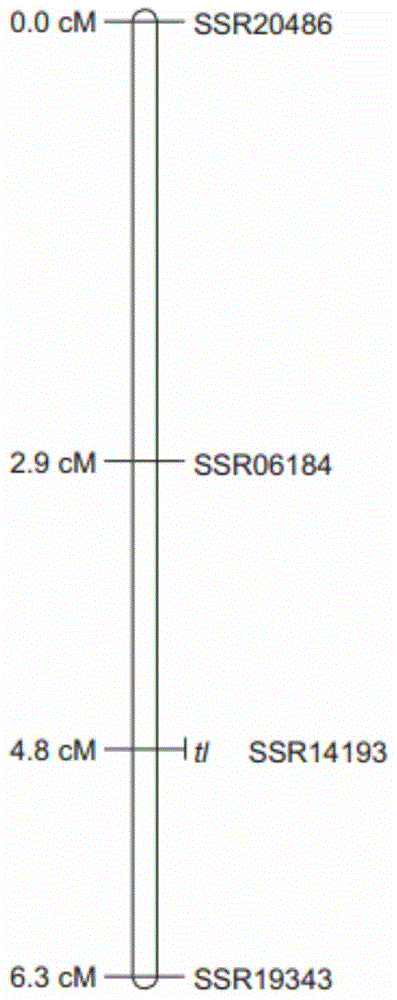Gene for controlling cucumber non-tendril character and cucumber tendril character-related SNP marker
A cucumber and trait technology, applied in the fields of genetic engineering and molecular biology, can solve the problems of slow progress in molecular breeding, unclear genetic positioning and molecular mechanism of cucumber's tendrilless trait, and achieve the effect of speeding up the breeding process
- Summary
- Abstract
- Description
- Claims
- Application Information
AI Technical Summary
Problems solved by technology
Method used
Image
Examples
Embodiment 1
[0033] Example 1 Discovery of SNP sites associated with cucumber tendril traits
[0034] There are 3342 cucumber resources collected from all over the world, and only one cucumber material has no tendrils, which is a rare mutation trait. The present invention has screened 115 cucumber core germplasms from 3342 cucumber resources, and performed resequencing analysis on these 115 cucumber core germplasms. Bioinformatics comparative analysis of the genome sequences of the tendrilless cucumber material and 114 other materials. From 3.6 million SNPs, 1018 rare SNPs unique to the tendrilless cucumber material were screened, and the number of rare SNPs that caused heterosense mutations was 75. Corresponding to 75 genes respectively, combined with the analysis of cucumber transcriptome, a gene Csa5G644520 was found that is only specifically expressed in tendril tissue, and it is speculated that this gene controls the development of cucumber tendrils. The rare SNP on this gene is respo...
Embodiment 2
[0039] Example 2 Initial Genetic Mapping of the Gene Csa5G644520 Controlling the Tendrilless Character of Cucumber
[0040] In order to verify that Csa5G644520 is the gene controlling the development of cucumber tendrils, the method of map-based cloning was used for verification. The F2 population of 6623 individual plants was constructed with a cucumber resource without tendrils (tltl) and a cucumber resource with tendrils (TlTl). Mapping locates the tl gene between the two markers SSR19343 and SSR0618, and the genetic distance is 3.4cM ( figure 2 ).
Embodiment 3
[0041] Example 3 Cloning of the gene controlling the tendril-free trait of cucumber
[0042] In order to clone the cucumber tendrilless gene tl, the two markers SSR19343 and SSR20486 that were initially positioned were selected to screen the remaining F2 population (6437 individual plants), and the Indel marker and SNP marker were developed inwards based on the initial positioning, and detected. The screened recombinant individual plants finally located the tl gene within a physical distance of about 18kb, and there was only one gene Csa5G644520 in this range, that is, the Csa5G644520 gene is the cucumber tendrilless gene tl, and a rare SNP associated with the cucumber tendril phenotype (i.e. SNP1) is located on the exon of the Csa5G644520 gene ( image 3 ).
PUM
 Login to View More
Login to View More Abstract
Description
Claims
Application Information
 Login to View More
Login to View More - R&D
- Intellectual Property
- Life Sciences
- Materials
- Tech Scout
- Unparalleled Data Quality
- Higher Quality Content
- 60% Fewer Hallucinations
Browse by: Latest US Patents, China's latest patents, Technical Efficacy Thesaurus, Application Domain, Technology Topic, Popular Technical Reports.
© 2025 PatSnap. All rights reserved.Legal|Privacy policy|Modern Slavery Act Transparency Statement|Sitemap|About US| Contact US: help@patsnap.com



